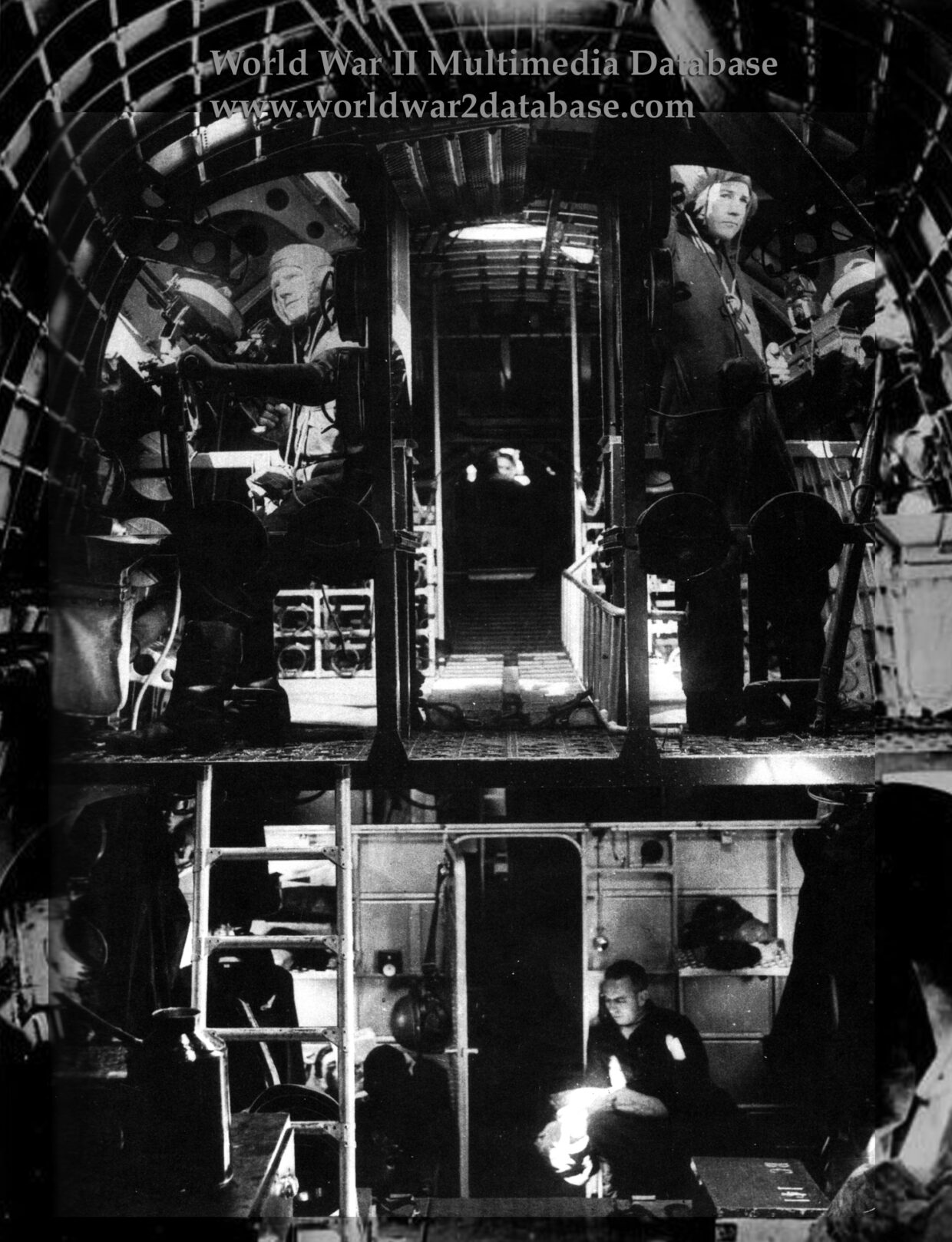| The interior of a Royal Air Force (RAF) Coastal Command Short Sunderland Mark I looking forward from the tail. Note the upper deck‘s two Vickers “K“ gunners, each armed with the .303 caliber (7.7mm) “Gas Operated (VGO) Number 1 Mark I“ machine gun that was added to Sunderland Mark Is in 1940. The “K“ gun was mounted in many of the RAF‘s larger aircraft through 1943, when enough Brownings became available. This view shows the spacious hold of a Sunderland, which had the flight deck and the gunners on the upper deck and a galley and bomb stowage on the lower deck. The Sunderland was nicknamed “Fliegendes Stachelschwein“ (Flying Porcupine) by the Germans for its legendary toughness and firepower, as well as for the unusual radar antenna mounted along the dorsal spine on spikes. The Mark I Sunderland had two Vickers “K“ guns in a power-operated Frazer-Nash F.N. 11 nose turret; four .303 Browning machine guns in a power-operated Frazer-Nash F.N. 13 tail turret; and the two manually operated “K“ guns in open blisters on either side of the fuselage. These open positions were somewhat protected from the elements by a steel shield that sheltered the gunners from wind, ocean spray, and rain coming over the wings, but were bitterly cold, especially at altitude or inclement weather. The Sunderlands flew ten-hour patrols with a range of 1800 miles (2896 kilometers). Designed in 1938, the first Sunderlands equipped 230 Squadron based in Malay in 1939. Crews of 210 Squadron ferried the new Sunderlands in and took 230 Squadron‘s old Short Singapore aircraft back to United Kingdom. In the United Kingdom, Sunderland Mark Is equipped 210, 204 and 228 Squadron. 228 Squadron received the first Sunderlands equipped with “K“ guns mounted in blisters on the fuselage. Sunderlands became famous early in the war, when two aircraft of 228 and 204 Squadron landed in rough seas to rescue thirty-four crewmen of tramp steamer Kensington Court on September 18, 1939. Seventy-five Sunderland Mark Is were built at Short‘s factories in Rochester, United Kingdom and Belfast, Northern Ireland. Sunderlands sank twenty-seven U-Boats during World War II. | |
| Image Filename | wwii0195.jpg |
| Image Size | 2.68 MB |
| Image Dimensions | 2240 x 2922 |
| Photographer | Unknown |
| Photographer Title | |
| Caption Author | Jason McDonald |
| Date Photographed | August 01, 1940 |
| Location | |
| City | |
| State or Province | |
| Country | Atlantic Ocean |
| Archive | |
| Record Number | |
| Status | Caption ©2007, ©2024 MFA Productions LLC Please Do Not Duplicate or Distribute Without Permission |

Author of the World War II Multimedia Database

